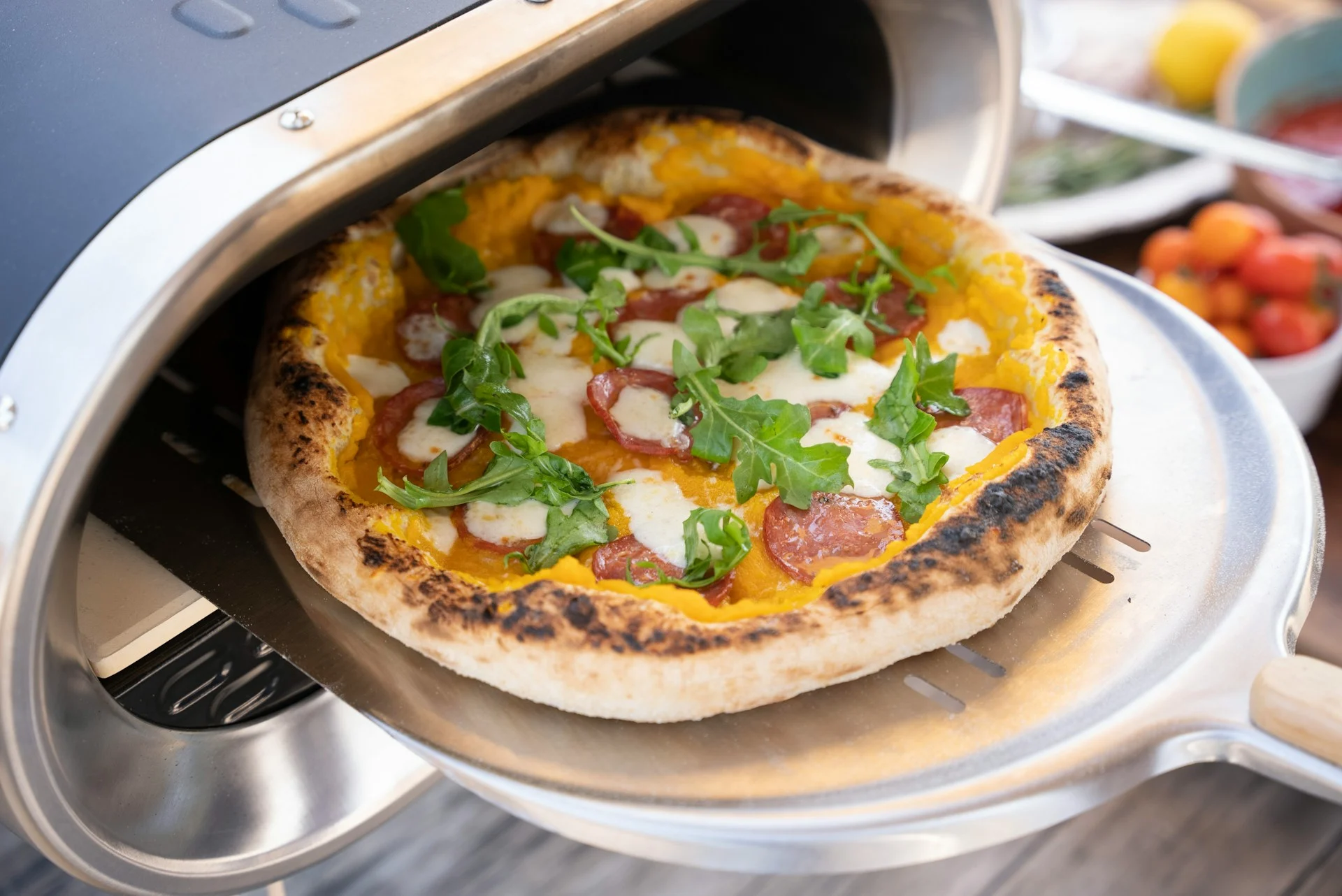Making pizza at home is more than just a cooking activity, it's a creative way to bring people together. Imagine the scent of freshly baked dough drifting through your kitchen, mingled with the delicious aromas of tomato sauce, spices, and melting cheese. Whether it's a Friday night with family or a casual gathering with friends, cooking homemade pizza offers a special kind of joy and satisfaction.

Photo by Revolve Pizza Oven on Unsplash
This guide will walk you through ten essential tips for your pizza-making game. From choosing the right flour for your crust to mastering the oven temperature for that perfect golden finish, these tips will help you replicate the flavors of your favorite pizzeria — or even better, inspire you to create unique pizzas all your own.
How do you make the perfect homemade pizza?
- Explore Unique Flavors
When crafting homemade pizza, don't shy away from experimenting with flavors that you love from other foods. A fun way to start is by recreating a favorite fast food item. Take, for example, the copycat Taco Bell Mexican pizza recipe by Eating on a Dime. By incorporating its key elements—refried beans, ground beef seasoned with taco spices, and a sprinkle of Shredded Monterey Jack Cheese —you introduce a familiar yet exciting twist to your pizza repertoire. Top it off with diced tomatoes and a drizzle of taco sauce after baking for that authentic touch. This approach not only satisfies your fast food cravings but also jazzes up your homemade pizza with a unique blend of textures and flavors.
- Choose the Right Flour
The base of any great pizza starts with the right flour. The type of flour you choose can dramatically affect the texture of your pizza crust. For a chewy, classic pizzeria-style crust, bread flour is your go-to due to its high protein content, which helps develop more gluten. If you prefer a lighter, crispier crust, all-purpose flour might be your best choice as it offers a more tender bite. For an authentic Italian pizza experience, 00 flour is ideal; it's finely ground and yields a beautifully soft yet crispy dough that's perfect for thin-crust pizzas.
For gluten free pizza fans, sub your favorite gluten free flour or try this recipe for gluten free pizza crust.
- Perfect Your Dough Technique
Perfecting your dough is crucial for achieving the ideal pizza crust. Start by using active dry yeast, and ensure it froths up nicely in warm water with a touch of sugar; this indicates it's ready to work its magic. When combining your ingredients, mix until just incorporated, then knead the dough until it's smooth and elastic. This can take about 10 minutes by hand. Letting the dough rest is equally important. A slow rise, ideally in a cool place over several hours, allows flavors to develop and gives the crust a better texture.
- Master the Sauce
No pizza is complete without the perfect sauce. Start with high-quality canned tomatoes — San Marzano tomatoes are a preferred choice for their sweet flavor and less acidic profile. Crush them by hand or with a blender for a textured sauce, then simmer with a splash of olive oil, a pinch of salt, minced garlic, and a few basil leaves. Keep your sauce simple; the natural flavors of the tomatoes should shine through. Let the sauce cook just long enough to meld the flavors together but not too long as to lose the fresh tomato taste.

Photo by Rahul Upadhyay on Unsplash
- Balance Your Toppings
Balancing your toppings ensures every bite of pizza is harmonious without being overly heavy or soggy. Start with a moderate amount of sauce, then add cheese—mozzarella is a classic choice for its delightful melt and mild taste. From there, add your toppings sparingly. A common mistake is overloading the pizza, which can lead to a soggy crust and uneven cooking. Distribute your toppings evenly and consider the cooking times of different ingredients; vegetables might need to be pre-cooked to avoid excess moisture.
- Optimize Oven Temperature
Achieving the perfect bake on your homemade pizza largely hinges on the oven temperature. Most professional pizza ovens reach temperatures well above what standard home ovens can produce. To mimic this environment, preheat your oven to the highest possible setting, typically between 500°F to 550°F.
- Use a Pizza Stone or Steel
Using a pizza stone or steel can make a significant difference in the quality of your homemade pizza's crust. These tools store heat and transfer it effectively, creating a hot, consistent baking surface similar to the floor of a traditional pizza oven.
To use a pizza stone or steel, place it in your oven during the preheating phase. Give it at least 30 minutes to heat up thoroughly before baking your pizza. The intense, direct heat helps to crisp the bottom of the crust quickly, preventing it from becoming soggy and ensuring a professional, pizzeria-style texture.
- Experiment with Cheese Varieties
While mozzarella is the quintessential pizza cheese, experimenting with different types of cheese can elevate your homemade pizza. Each cheese offers unique flavors and melting characteristics. For instance, adding dollops of ricotta cheese can bring a creamy texture and subtle sweetness, perfect for white pizzas. A sprinkle of aged Parmesan adds a sharp, salty bite that complements richer toppings like prosciutto. For a bold flavor, consider gorgonzola or feta, which can add a tangy punch. Mixing cheeses can also provide a more complex flavor profile and a more interesting melting texture.
- Consider Homemade vs. Store-Bought Ingredients
The choice between homemade and store-bought ingredients can impact both the flavor of your pizza and your overall health. Making your dough and sauce from scratch allows you to control the ingredients, avoiding preservatives and additives found in many commercial products.
Homemade dough and sauce not only taste fresher but also let you customize flavors to your liking. However, store-bought ingredients can be a convenient and time-saving option, especially for those with busy lifestyles.
- Presentation and Serving
The final touch to your homemade pizza is in its presentation and serving. A well-presented pizza makes the experience more enjoyable.
After baking, let your pizza cool for a few minutes; this makes it easier to cut and helps the cheese set, preventing it from sliding off. Use a sharp pizza cutter or a large chef's knife to slice your pizza cleanly. Serve it on a wooden board for a rustic look or on a warm plate to keep it hot.
Check out this outdoor pizza oven 101 post for more tips!
Creating the perfect homemade pizza is an art that combines the right techniques, ingredients, and tools. By optimizing your oven temperature and using a pizza stone or steel, you can achieve a crispy, well-cooked crust. Experimenting with different cheeses and balancing your choice between homemade and store-bought ingredients allows for customization and healthier options. Finally, presenting your pizza beautifully makes the experience of eating it even more delightful. Embrace these tips, and enjoy the process of making and sharing delicious, tailor-made pizzas with friends and family.
